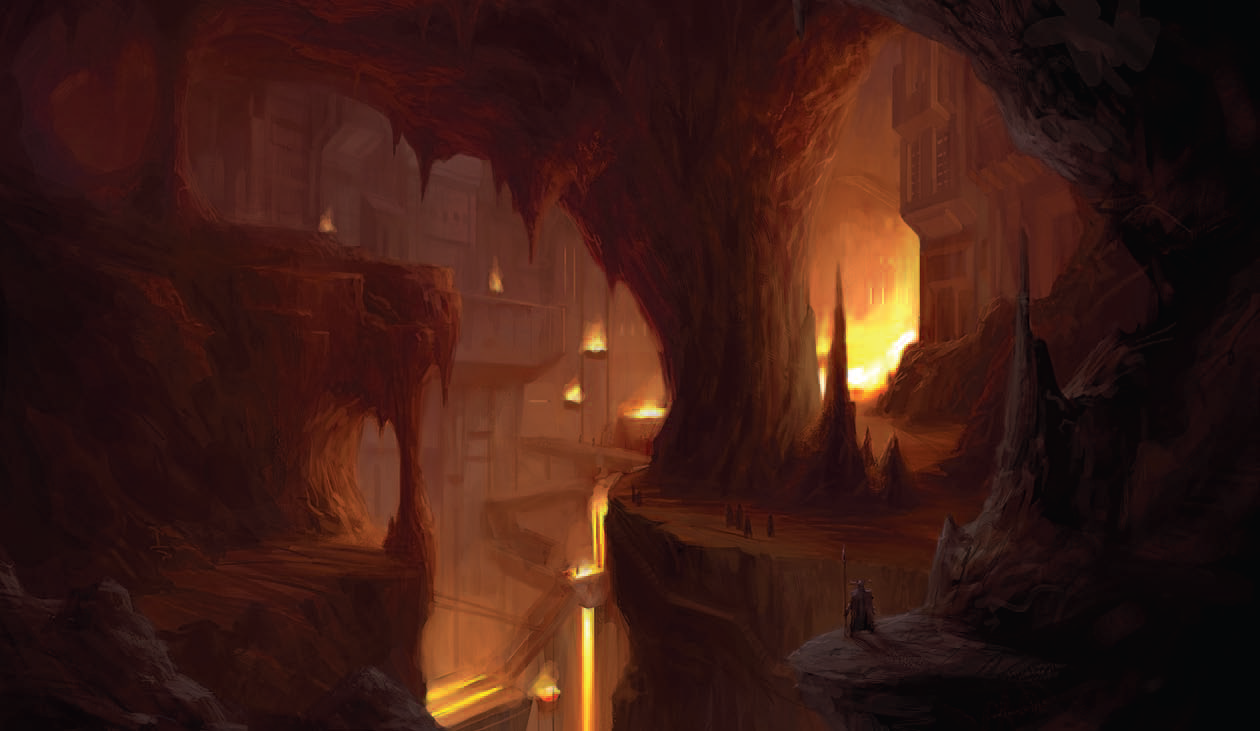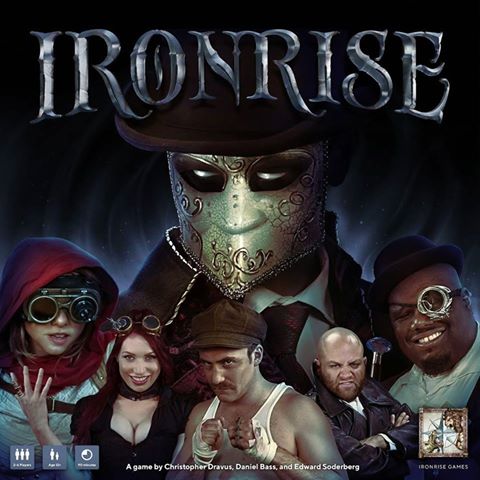Ghal Ankhar
No place in Tairos holds honor, tradition and community more dear than within the faded halls of Ghal Ankhar. Thousands of years ago the early dwarven tribes gathered in the deep caverns of the northern mountains to carve out their nation that would be stronger, more enduring and more worthy of the future than any other people. Over time many would look to the glory and might of Ghal Ankhar with hope. The mountain dwarves could be counted upon to defend the defenseless and to stand for something important. Others would look to the mountain and see something else- greed and avarice masked in morality, stagnant traditions and an overbearing desire to be recognized for their efforts. The mountain dwarves believe themselves the last of dying breed, not of dwarves, but of a people who care about who they are and what evils are allowed to fester in Tairos.
Early History
The dwarves are excellent record keepers and among the many annuls of their history are the accounts of first days under the ashen sky of Mount Rahkharth. The many tribes lived in relative peace before Rahkharth exploded, casting ash, magma and toxic winds arounds the region. The hellish conflagration consumed dozens of dwarven tribes forcing the survivors to take the only refuge they could, within the mountains themselves. The cataclysm did not impact the dwarves alone though. The mountains were home to numerous Orc and goblin tribes as well as inbred families of trolls and ogres. All of these threats also sought refuge within the mountains. The many tribes banded together out of necessity to push back the others that competed for the most resource-rich sections of the mountains. From these joint struggle tribes became clans and clans came together as a kingdom. From their many powerful families a king was chosen. Noble and common dwarf alike cast their vote and chose Atur Urin as the first king of Ghal Ankhar. It was decided that every king to follow would surrender their family name and take on the name Urin. They believed one clan could represent all of dwarf kind fairly but each Urin chosen became more than his bloodline- he became a champion to his people. An Urin King. The first Urin King and his people faced their greatest challenge only years after he was crowned. From across the frozen north swept a bitter cold and creeping ice that managed to penetrate even the rocky walls of the mountains. The north’s true master had returned after centuries of preying upon distant coasts across the ocean. Abon the Tempest, a white dragon of immeasurable power, who had long ruled these mountains returned to his perch. He slaughtered the family of frost giants that had infested his nest and then turned his eyes upon the dwarves. Fortress after fortress was rent open by claw and fang. The survivors were cast out into the cold where many more perished in Abon’s unnatural storms. When Abon came for the capital it was only by the combined might of the dwarven clansman and their bold king that the dragon was pushed back. Atur Urin followed the dragon east to what would later be known as the Stormlands. His ship and crew were slain by the dragon but Atur, his brother Frolin and uncle Hagri escaped the wreckage and battled the beast amid the storm wracked peaks of the island. All three of the dwarves would lose their lives in the battle but Atur is said to have delivered the final blow with his dying breath. In the ages that would follow, Urin Kings would solidify the hold their people have over the mountains. They would expand their realm of control, construct grand forge cities and form the clan structures that endure to even this day. Ghal Ankhar was transformed from a drab gray cavern into a sprawling empire that rivaled the size and might of Melanthris.Arrival of the Gnomes
When the gnomes arrived in Tairos the dwarves realized there were solutions to the engineering roadblocks they had encountered. The dwarves needed more intricate machines, economic solutions to fuel their forges, and improvements to the sciences of black powder, steam and combustion. They believed that advancements in engineering were the key to spreading their glory to other mountains in the north and to build trade cities in the plains. They approached the gnomes eager to offer their bounty of resources. They could not have imagined the gnomes’ response… no thank you. Clan lords, merchant barons, unions and even the Urin King were shocked by this rejection. More resources and construction engines were offered to Greenbriar yet all of this was politely rejected. The merchant barons even offered to build a forge-city for them while clan lords secretly clamored for a military solution. The Urin King quieted the desire for conflict and pushed the merchant barons to build the forges and continue with the path of alliance. This measured and calm response would earn some token reciprocation from the gnomes but it left many clans bitter and slighted. This is the first time in the history of the dwarven nation that a small minority of clans spoke out publicly against the decision of their king.The Serpent War
When the war against the Serpents began the Urin King was quick to send siege masters to aid the elves. Many individual clan warriors saw this as an opportunity to bring great glory to their bloodline and set forth as independent soldiers to bolster the elven ranks. When Melanthris put out the call to all kingdoms to form the Grand Concordance and band together against the Serpent Cults Ghal Ankhar became the first to join. The Urin King and the clan lords marched forth with an impeccable army of dwarves and war machines. The warriors among them could not resist the honor that this would bring. The merchant barons hoped war would bring opportunity for trade with members of the Concordance. It was at the battle for Hollow Hope that the dwarves would truly prove themselves. The Serpent’s Tempe-City was laid siege to for weeks on end and after a bitter struggle the city defenses were breeched. When the last defender was butchered a call from the walls echoes through the warzone- Serpents and enslaved demons marched on sundered walls of Hollow Hope to reclaim the city. The Urin King and his clan lords had become the besieged. For three long nights they pushed back against every wave of attackers. On the third night the king, Ghesthal Urin, road out upon the back of his war bear with his last remaining clan lords and carved their way to the Serpent’s general and slew him. While the Urin King was away he left the city in the hands of the Council of Clan Lords. In the absence of the king they were charged with pushing dwarven progress forward. Many options were considered but a powerful circle of clan lords and merchant barons came forward to suggest a radical solution. Slave labor. Instead of gnomish clockwork science they proposed work camps tasked with constructing forges and trade cities. It was revealed to the others that these slavers already put this practice into effect by using goblins, orcs and other dregs in their clan forges. Most were outraged by the very notion yet some clans were swayed to this way of thinking. The Slavers’ Council war born.The Plague of Undeath and the Coming of the Autumn Queen
These Slavers would recede into the fringes of dwarven society as the Plague of Undeath gripped Tairos. The dwarves spearheaded the rescue of every besieged township and village they could reach. Defiling the dead is among the highest of crimes in dwarven law and putting to rest the walking dead a duty that no clansmen can ignore. They were also happy to help Melanthris round up the Necromancers who cause the outbreak and see to their exile in the Scorch. When the magicians of Melanthris made contact with the Autumn Queen the dwarves were as unaware as the other kingdoms. As the Queen stepped out onto the public stage the mountain dwarves could not have been less interested in the matter. It seemed like the epitome of elven pomp and fascination. However; when the fae introduced Manacite to Tairos the dwarves saw another avenue to further their expansion. They began buying massive quantities of the stone and constructing forge-cities dedicated to the fae craft. In exchange, when the Queen and her kind sought membership in the Concordance the Urin King spoke on her behalf. With the fae working so closely with the dwarves in their forges it was only a matter of time before the Slavers’ Council and the Queen would meet. She saw in them as a marginalized, voiceless people eager to embrace a potential that had long been denied. As they leylines were poisoned and magic began to die support for the Queen turned to animosity. Dwarven clan lords realized they too had been used by the fae. Rather than let this powerful force turn against her she nurtured the hatred, betrayal and fear the Slavers’ Council held in their hearts. She gave these voiceless few a means of being heard- massive amounts of manacite along with the infernal teachings of the Serpent Cults. Her supporters in Melanthris happily turned over the Serpents’ tablets so that she could present them to the Slavers. This dangerous group of traitors now they had the tools they needed to shackle not just the living but the demonic.The Queen's War
As the Queen’s War erupted the Dwarves of Ghal Ankhar were assailed by their own kind. These allies of the Shadow Court wielded weapons infused with manacite and bound demonic entities into their war engines. The Urin King Orothan was taken completely by surprise during the initial attack and before he could order a response he was murdered by his own son, Mordant. Mordant tried to claim the throne but this outrage drove the loyal clans to a frenzy. They elected a new Urin King, Arrat, to led them against the betrayers- The Duergar. By the final years of the war all that remained of the mountain dwarves’ empire were scattered fortress-cities and plainer outposts. The rest was ruins. The Duergar were expelled from the kingdom and fled to the only place they would be safe- Mount Rahkharth. There, amid burning rivers and choking skies they would remain. Now, long after the Queen’s Rebuke, what remains of the once glorious Ghal Ankhar is the capital and a few connected cavern cities. Half functional fortresses dot the mountains but only a handful are manned by dwarves. Goblinoids are slowly encroaching on the mountains again. Duergar slave hunters prize their mountain kin above all other livestock and more young dwarves leave for the cities of Tairos than stay. Many believe that Arrat will be the last Urin King and that it will be his duty to write the final page of dwarven history.Demographics
The only race allowed permanent residence in Ghal Ankhar are dwarves. Visitors are not allowed to linger for more than a few months.
Government
The Urin Kings have ruled over dwarven society since the very beginning. Even the dwarves that leave for Ghal Pelor or the other cities still see the Urin King as a figure worthy of deep respect. The king of the dwarves is more than just a ruler. He is a peerless warrior trained in all forms of martial combat. He is a sage who studies the long history of Ghal Ankhar so that the wisdom of every king before can guide his decisions. He is a conduit to the gods of the dwarves. Even though their divine voice is silent their hands rest upon the shoulder of the king.
In Ghal Ankhar the king is also advised by the Council of Lords, a body made up of a single representative from every clan left in the mountains. They advise the king on the matters important to clan life such as commerce and diplomacy. They are powerless to enact any law but they preside over the election process when an Urin King needs to be chosen. If a king ever needed to be removed they can call for a vote among the people but this has never been done. The Council of Lords is selected by each clan through whatever means they choose.
The priests of Torag, the head of the dwarven pantheon, are still honored and respected among dwarven kind even though their numbers have dwindled. They have no power in government but their voice has always been a cherished one at meeting of the Council of Lords. The dwarves believe their gods will speak again once they repair the damage done by the fae.
Defences
The stone walls of Ghal Ankhar are believed to be the most impenetrable defense in all of Tairos.
Industry & Trade
Precious metal and stone, precious jewels, stone and metal work
Infrastructure
Large sections of the city are dedicated to refineries, smitheries and mining.
Assets
Last stores of precious jewels. Ore deposits. Defensible tunnels. Natural underground lakes
Guilds and Factions
Merchant Barons and factory unions hold considerable sway with the Urin Kings. They are the backbone upon which all remaining dwarven trade and labor is built. It was the merchant barons that bartered a deal with the Tengu for their manacite. They have intricate and structured deals with the ice fishers in Frostmere, the traders in Ghal Pelor and loggers all the way in Rylan as well. They are constantly on the lookout for new and enterprising means of enriching themselves. Many see the merchant barons and unions as the most progressive of all mountain dwarves so long as wealth is on the line.
Architecture
Traditional dwarven style. Dwarven architecture is noted for its grey and bronze coloring, blockish aesthetic and the melding of stonework into natural rock surroundings. It is also designed to last with minimal maintenance required. All of this points to the reason that dwarven structures almost never fall to time or the elements.
Geography
The craggy, cold and windswept peaks of the Ankhar mountains and the deep cave systems within them.





A solid article detailing the history of the Dwarves of Tairos. A real sense of where Ghal Ankhar exists within the world is carried over in the writing.
Thanks so much sir!